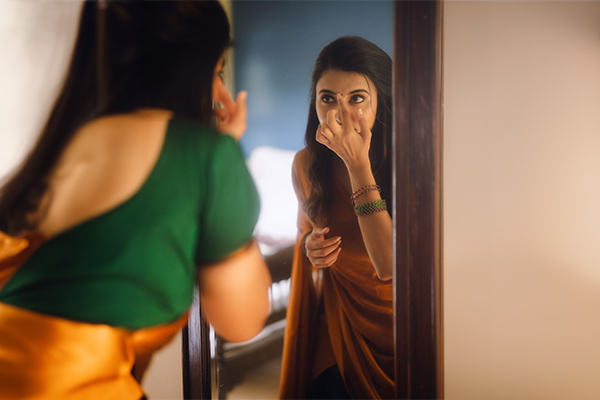
The bindi is one of the most recognizable and revered symbols in Indian tradition. A mark of auspiciousness, dignity, and inner awareness. It is not merely an ornament worn on the forehead, but a sacred expression of the Sanatan Dharma’s understanding of energy, identity, and consciousness.
Traditionally placed at the centre of the eyebrows, the bindi signifies the Ajna Chakra, the seat of intuition, clarity, and spiritual insight. From ancient times, it has been worn by women to invoke protection, focus the mind, and honour the divine feminine energy within.
Beyond spiritual meaning, the bindi carries cultural depth, marking marital status, social customs, and celebratory moments. It is seen in temples, festivals, classical dance, and everyday life, quietly radiating grace and strength.
In this article, we explore the Vedic origin, deeper symbolism, Ayurvedic relevance, and modern expressions of the bindi, revealing why this sacred mark continues to live vibrantly in the hearts, homes, and spiritual paths of Indian women.
Meaning and Origin of the Bindi
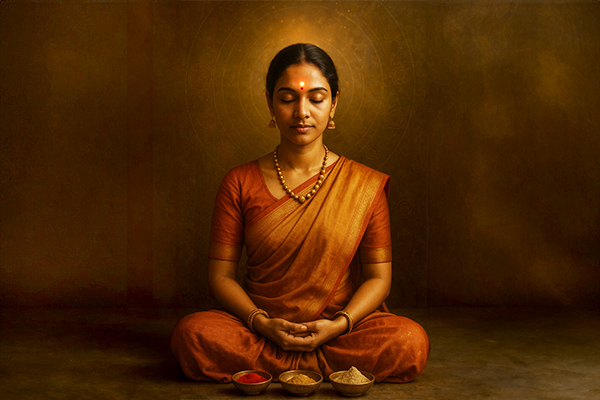
The word ‘Bindi’ is derived from the Sanskrit word “Bindu”, which means a sacred point, drop, or spark of energy. In yogic and tantric traditions, the Bindu represents the point of origin, the cosmic seed from which all creation emerges and into which all dissolves. It is the source of stillness and the doorway to the infinite.
In the Vedic worldview, this mark is placed at the Ajna Chakra, also called the ‘third eye’. The centre of higher wisdom and intuition. It is believed that from this point, the individual mind connects to universal consciousness. The bindi, then, becomes a symbol of the union between the physical and the spiritual.
In ancient India, the bindi was not merely an accessory but a daily spiritual practice. Sages and householders alike would mark this point to centre their awareness, conserve prana (life energy), and awaken inner clarity. For women, it was also a gesture of invoking Shakti, the divine feminine energy to radiate grace, strength, and serenity through their presence.
This sacred dot was traditionally made using natural materials like:
Kumkum (vermilion):
Signifying auspiciousness and vitality
Chandan (sandalwood):
To calm the mind and activate focus
Bhasma (holy ash):
As a reminder of impermanence and surrender
Thus, the bindi is not a recent social custom but a deeply spiritual practice that traces back to the roots of Sanatan Dharma, carrying the essence of subtle energy, divine consciousness, and reverence for the inner self.
Spiritual Significance of Wearing Bindi
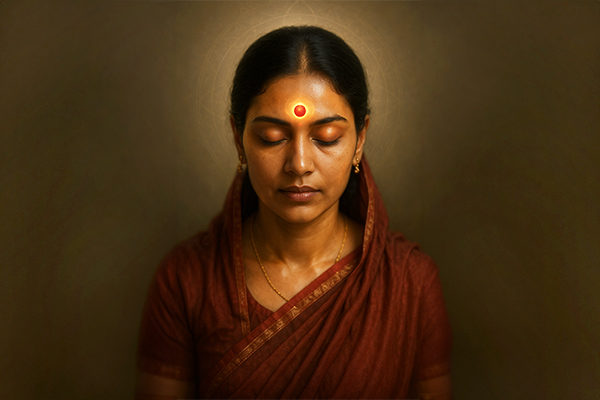
In Hinduism, every ritual, symbol, and tradition carries a deeper spiritual meaning, nothing is arbitrary. The bindi, placed at the centre of the forehead, is more than an external mark, it is a spiritual anchor.
This point is considered the gateway between the physical and subtle realms. In yogic wisdom, it is from here that one begins to transcend mental patterns and awaken the state of witness consciousness. A step toward liberation (moksha).
For women, wearing a bindi is not just a gesture of beauty or social identity. It is an act of invoking the sacred within. In Hinduism, the woman is seen as the embodiment of Shakti, the dynamic creative power of the universe. By placing the bindi at this energy point, she honours that power within herself and balances the inner energies of Shiva and Shakti.
This is also why the bindi is worn during:
Meditation or puja:
to help centre the mind
Marriage ceremonies:
to signify sacred union
Festivals and Vrats:
to invoke auspiciousness and protection
The bindi becomes a constant reminder of one's deeper self. It redirects awareness from the outer world to the seat of spiritual perception. Through it, the everyday woman becomes a living temple, her body the shrine, and her gaze the presence of the divine.
In a culture where the sacred is woven into the everyday, the bindi is not placed on the skin, it is placed upon the soul.
Cultural and Traditional Importance of the Bindi

Across centuries of Indian civilization, the bindi has held an esteemed place in the cultural identity of women, symbolizing dignity, honour, and feminine power within society. It is part of the Solah Shringar (sixteen adornments) traditionally worn by married Hindu women, denoting completeness, grace, and commitment to dharma.
In many regions of India, the red bindi is considered a symbol of Suhaag. A sign of marital bliss and prosperity. A married woman wearing a red bindi is seen as an auspicious presence in the household, someone who carries forward Lakshmi Tattva (the vibration of prosperity and nurturance).
The bindi is also used:
- During weddings, to mark the bride as sacred and centred
- On festive occasions, as a way of expressing joy, beauty, and feminine pride
- During naming ceremonies, temple visits, and vrats, where it signifies purity and respect for tradition
Importantly, the bindi is not restricted to marriage. Young girls and unmarried women wear black, maroon, or decorative bindis as a way to honour culture and protect their aura. Even infants are given a small dot of kajal or black ash on the forehead or behind the ear to ward off evil eye (drishti).
In every case, the bindi is more than personal expression. It is a way of participating in a living cultural memory, a practice passed from mother to daughter, echoing the values of belonging, beauty, and sacred identity.
Scientific and Ayurvedic Perspective of Wearing the Bindi
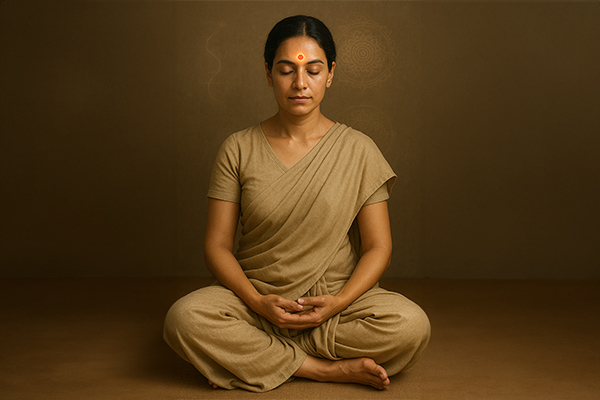
The practice of wearing a bindi is deeply rooted in both Ayurvedic wisdom and scientific understanding. Far beyond its aesthetic appeal, the bindi serves as a focal point for energy, health, and mental clarity.
-
Activation of the Ajna Chakra (Third Eye)
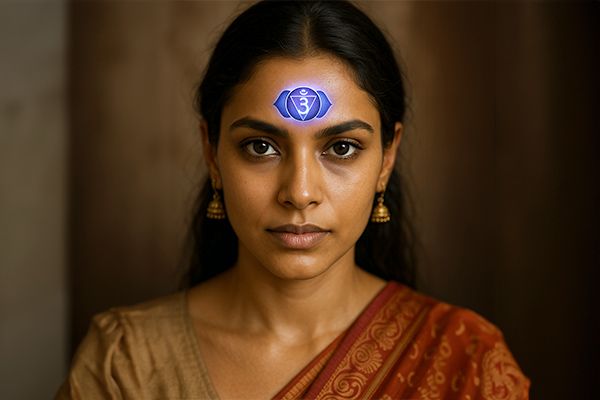
The bindi is traditionally placed at the center of the forehead, corresponding to the Ajna Chakra, also known as the third eye. This chakra is associated with intuition, perception, and spiritual insight. Stimulating this point is believed to enhance concentration, clarity of thought, and inner wisdom.
- Acupressure Benefits

In both Ayurveda and acupressure therapy, the area between the eyebrows is recognized as a vital point. Applying gentle pressure here can help:
- Relieve stress and anxiety
- Alleviate headaches
- Promote relaxation and mental calmness
-
Regular stimulation of this point through the application of a bindi may contribute to overall emotional well-being.
- Energy Conservation
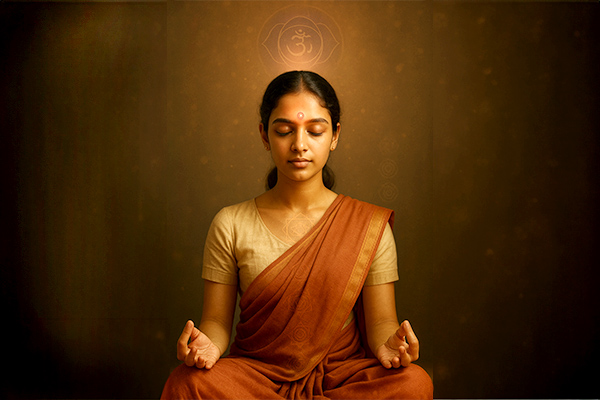
Ayurvedic teachings suggest that the human body continuously emits energy, particularly from the forehead region. The bindi acts as a barrier, helping to retain this energy and maintain focus. This conservation of energy is thought to support mental stability and spiritual growth.
- Cooling Effect of Natural Materials
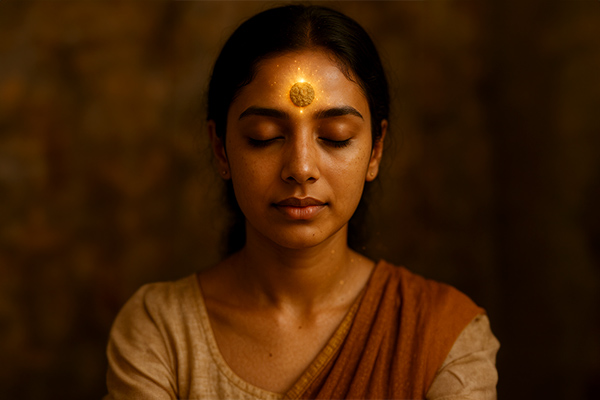
Traditional bindis are made from natural substances like sandalwood paste, turmeric, or sacred ash. These materials are known for their cooling properties, which can help soothe the forehead area, reduce tension, and promote a sense of calm.
- Innovative Health Applications
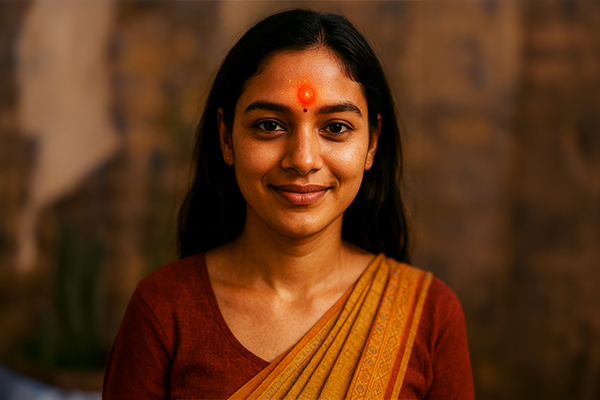
In recent times, the bindi has been utilized in innovative ways to address health concerns. For instance, the 'Life Saving Dot' project in India introduced iodine-infused bindis to combat iodine deficiency among women. These bindis release a small amount of iodine daily, providing a simple and culturally accepted method to improve health in regions where iodine deficiency is prevalent.
The convergence of ancient Ayurvedic practices and modern scientific insights underscores the multifaceted benefits of wearing a bindi. It serves not only as a symbol of cultural identity but also as a tool for enhancing physical health and mental well-being.
Types of Bindis and Their Modern Variations
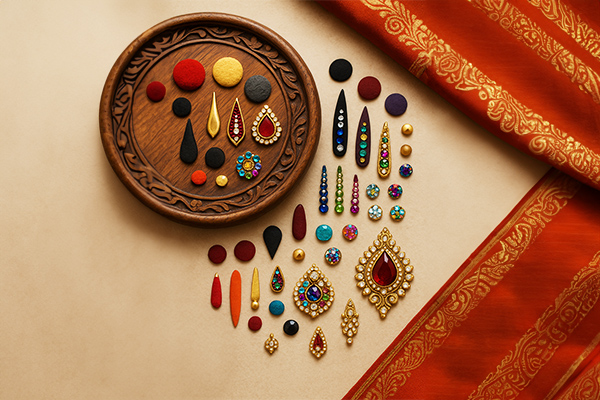
While the traditional bindi was once simple, sacred, and primarily red, it has now evolved into a wide spectrum of styles, bridging ancient meaning with modern expression. Across India and beyond, women today wear bindis that reflect not only their tradition but also their personality, style, and social identity.
- Traditional Bindis
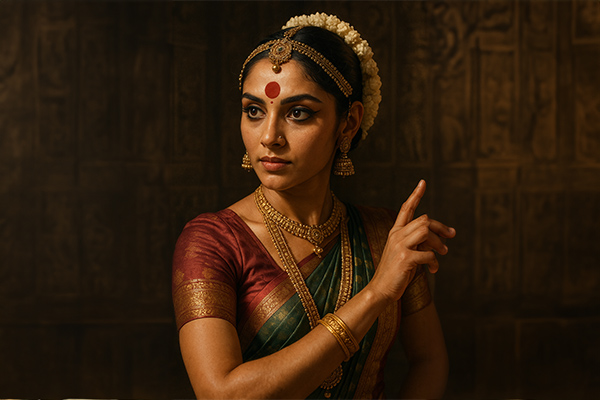
These are worn during rituals, temple visits, or daily spiritual practice:
- Kumkum Bindi (Red) – Made from turmeric and lime, it is the most sacred form, symbolizing marital status and auspiciousness.
- Sandalwood Bindi (Chandan) – Offers a cooling, calming effect, often used during pujas and meditation.
- Bhasma or Vibhuti Bindi – Made from sacred ash, worn for spiritual grounding and detachment.
- Haldi (Turmeric) Bindi – Especially used in South India for protection and purity.
- Cultural and Regional Variations
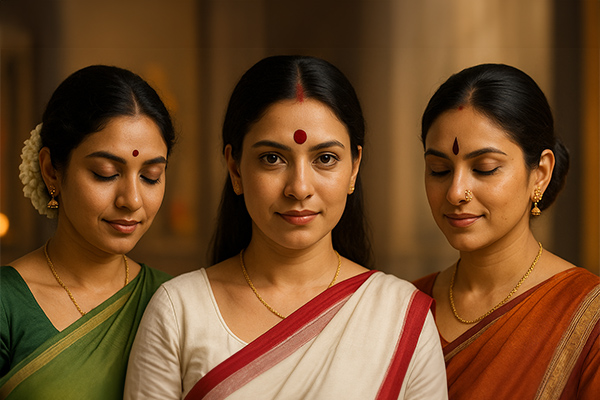
In South India, women often wear round red bindis made from kumkum during festivals and vrats.
In Bengal, married women may wear a large red bindi along with shankha and pola bangles.
In Maharashtra, crescent-shaped bindis are common, symbolizing Shakti and regional pride.
-
Decorative and Fashion Bindis
These emerged in the late 20th century and became widely popular:
Stick-on Bindis – Available in various colours, shapes (round, leaf, teardrop), and embedded with stones or glitter.
Crystal or Rhinestone Bindis – Often worn during weddings or cultural events.
Black Bindis – Worn by unmarried girls or children, often believed to ward off evil eye.
Despite being ornamental, many women still choose to place these bindis at the Ajna Chakra, maintaining the original sacred placement.
-
Contemporary Usage Beyond Religion
Some women wear bindis simply for fashion or personal expression.
Bindis are seen in classical dance, modern Indian films, and even Western interpretations of 'ethnic chic.'
While divorced from strict ritual meaning, the placement still carries a subtle energetic charge that cannot be dismissed.
Today, the bindi lives in both temples and offices, traditional homes and fashion shows. Whether sacred or stylish, it continues to be a mark of grace, strength, and centered presence.


-in-Astrology.jpg)
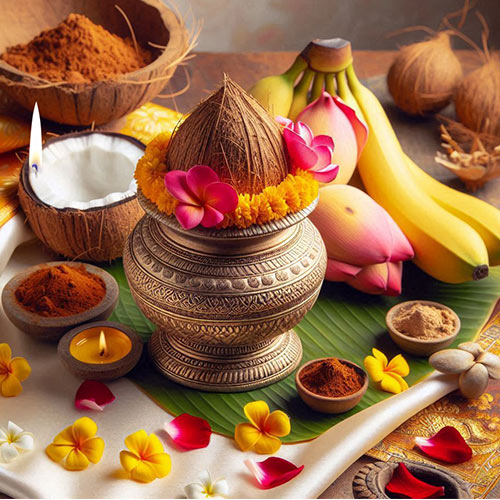
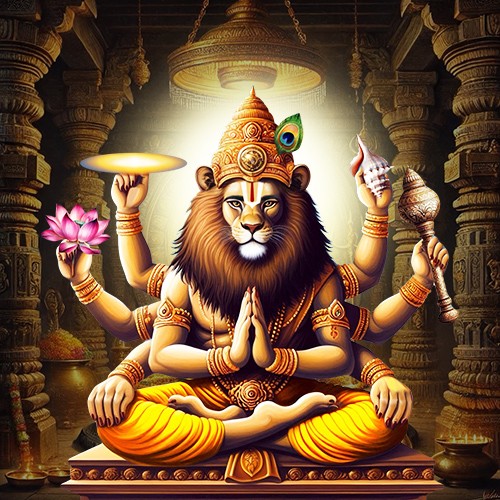
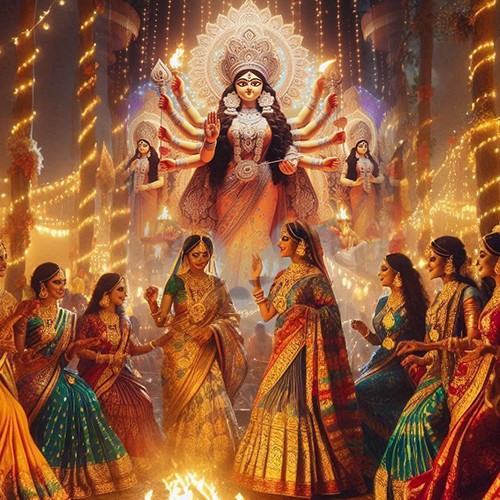
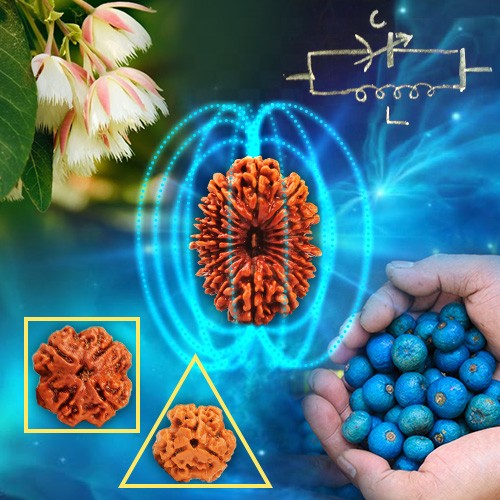

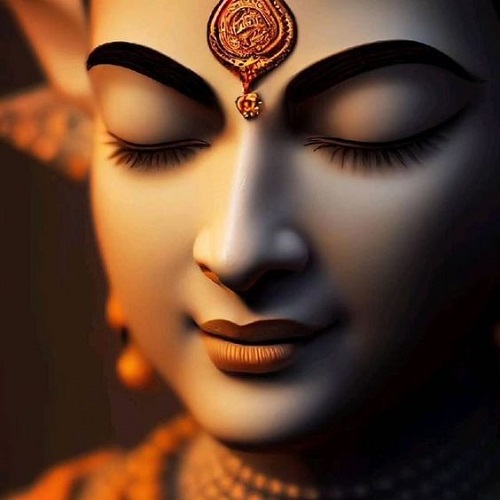
.jpg)
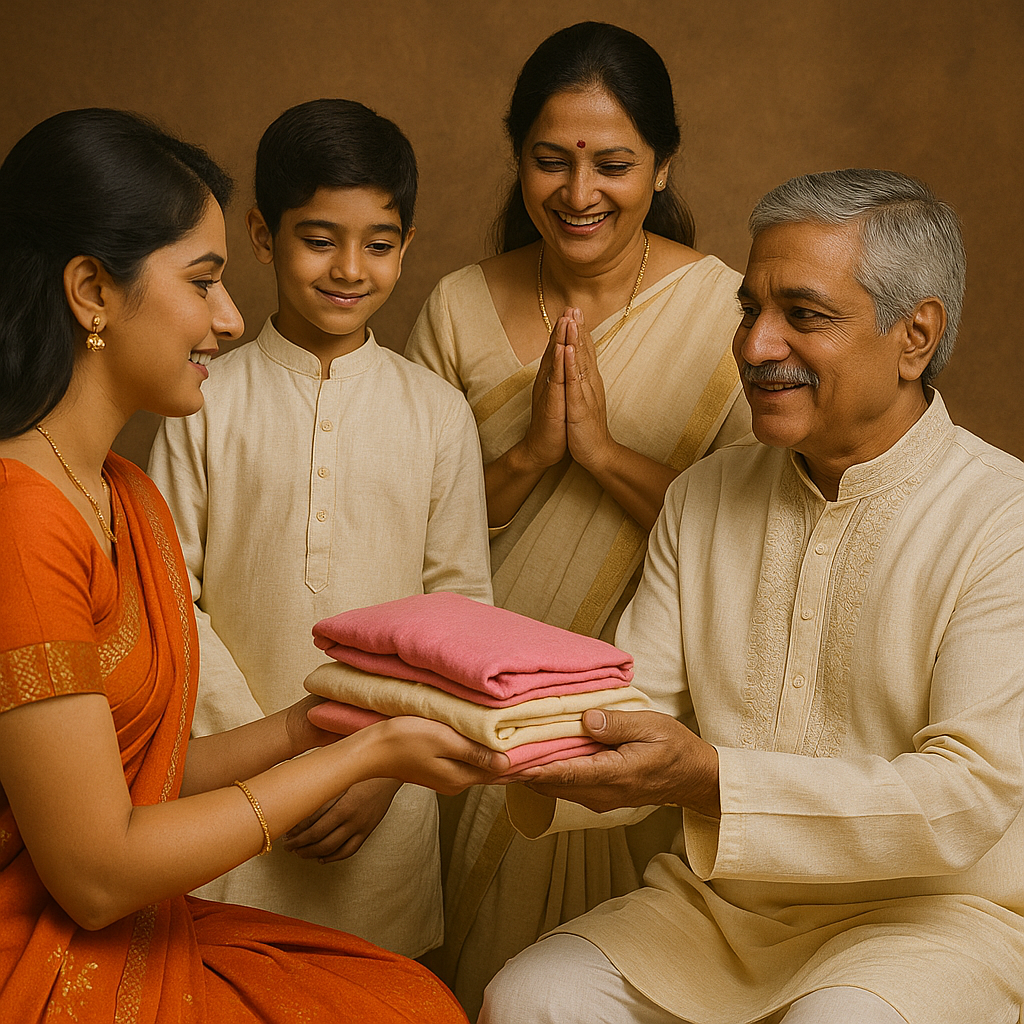
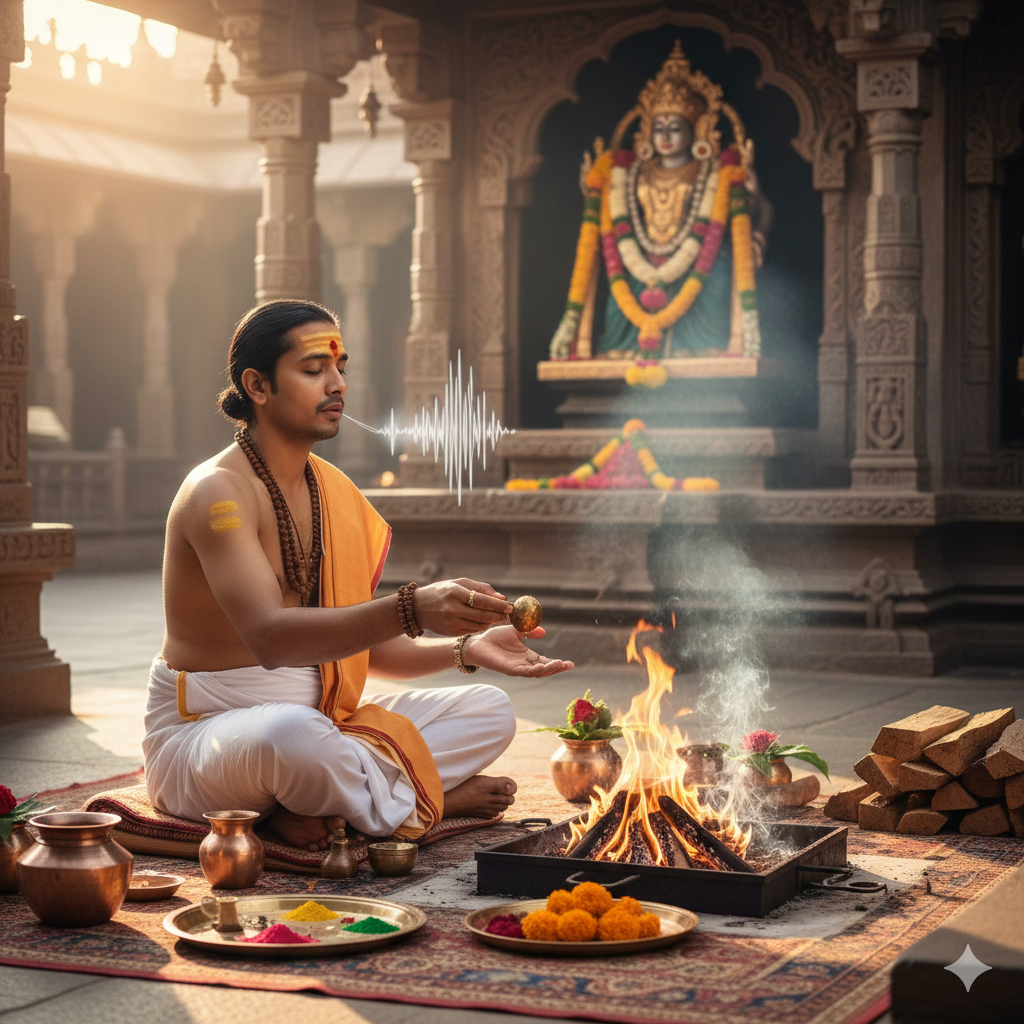
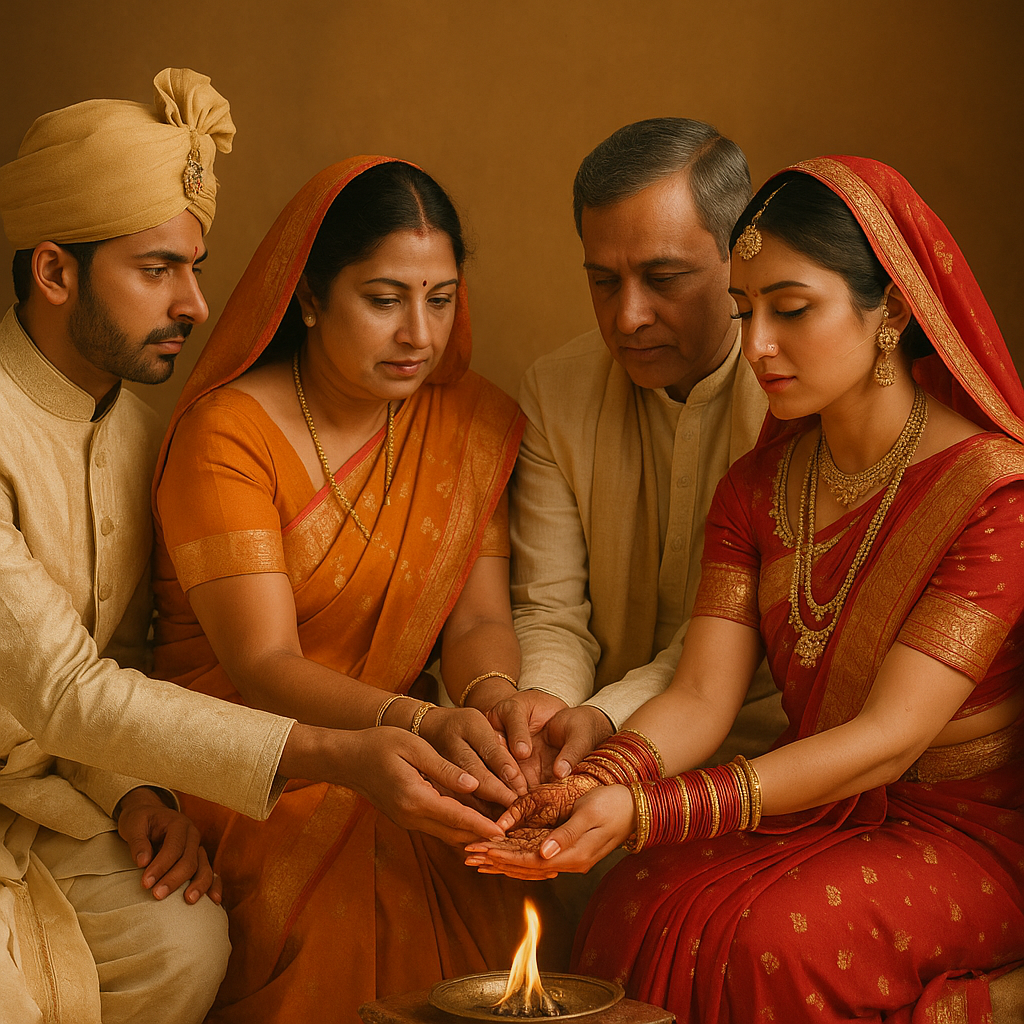
Comments 0
Leave your thought here